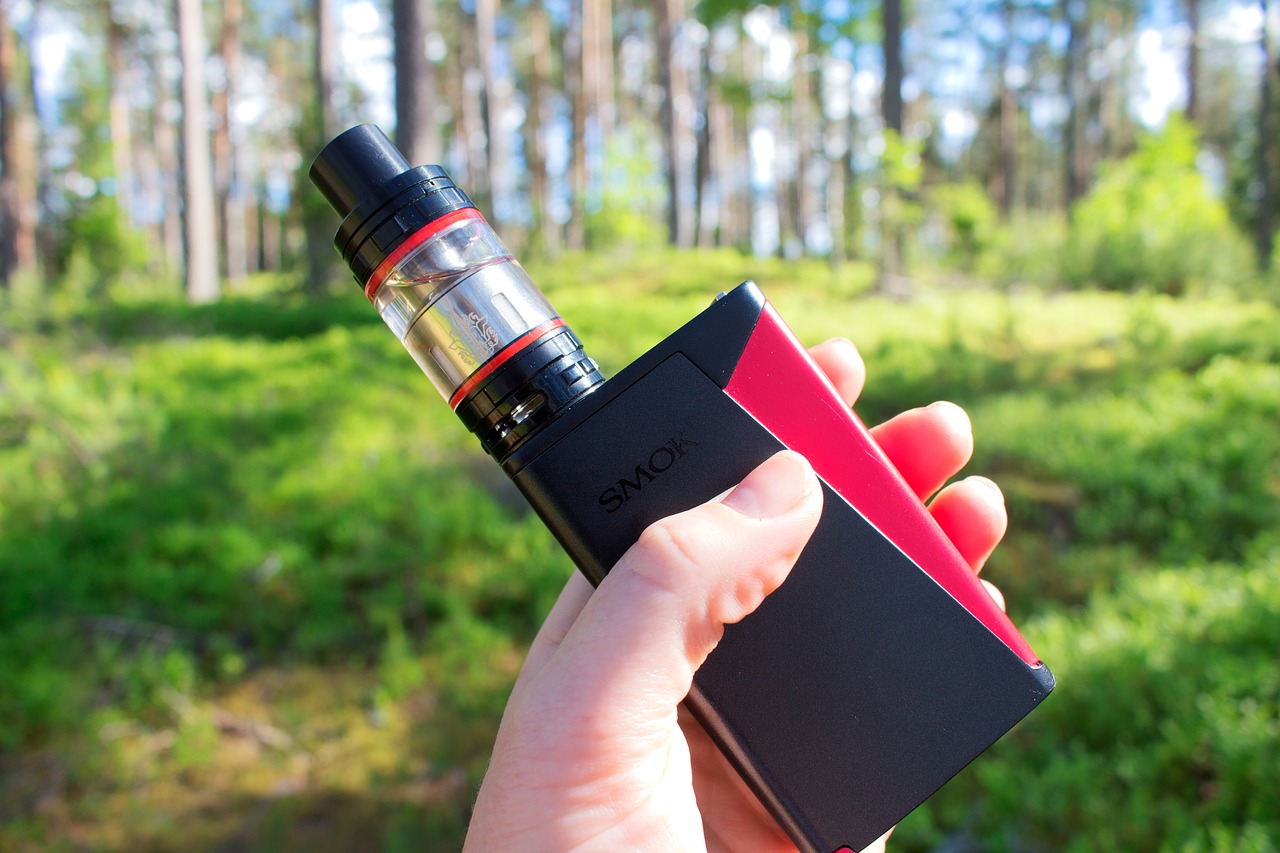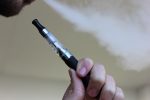Electronic cigarettes have become one of the fastest growing trends in recent history, and the fact that teens are a big part of it has raised considerable eyebrows. With the stream of hospitalizations and deaths across America, the country is pointing fingers at the addictive teen pastime. The government is working to curb the crisis, but the question still remains — is it too late to stop the vaping epidemic?
To help smokers quit, the first commercial e-cigarette was created in early 2000s China. They were later introduced to the U.S. in 2007, and teen use boomed throughout the 2010s. All devices have fairly simple operations that most people can understand. Each time a user sucks in through the mouthpiece, liquid flavoring is vaporized and flows into their lungs, later blown out as smoke. Vape liquid, such as Koi CBD vape juice for example, usually only consists of these nicotine, THC or CBD-infused substances, and the user can decide how much of the drug they’d like in a device.
FDA and general government policy have been slow to support the alternative, but there are studies that show how it may help cigarette smokers quit. But for the most part, vape devices haven’t been used to stifle addictions as much as cause them, especially outside of — and a little younger — than their targeted demographic.
There is no one specific reason why use has increased, but psychology points to the idea that doing things that are “bad” can lead to a cathartic response, especially among adolescents. Social media has also glorified vaping in some ways, providing a more modern aesthetic of “the cool guy smoking a cigarette,” or the James Dean and Marilyn Monroe archetypes. These false ideals and their mass collection of flavored liquids have led many teens to try vaping, and the highly addictive drug reels them in, in dramatic quantities.
The launch of popular brands Suorin and JUUL are sometimes credited to the massive spike in underage sales due to their variety of flavored liquids and sleek designs. What’s most concerning, however, is the amount of nicotine offered in their devices.
“One 5% strength JUULpod is designed to replace one pack of cigarettes in both amount (20 cigarettes~200 puffs) and nicotine strength,” JUUL states. While there are brands that use less nicotine in their products, teens are still vaping in record numbers, and the effects of chronic smoking have sent some to the hospital. And like the vaping statistics, the count is only growing.
Since last Friday, the CDC has confirmed six deaths and 450 cases of lung disease and injury connected to vaping. Patients, mostly teens, have entered emergency rooms with chest pain, dizziness, profuse vomiting and other lung-related symptoms. While examining, the doctors have noted common ailments — burnt esophagus, popcorn lung (black spots, indication of burns) and fluid in lungs. Health professionals are worried about this fluid because it signals inflammation, and the chances of dying “can be as high as 70%.”
Besides burns and inflammatory problems, nicotine poisoning is also causing terrible injuries and reactions among e-cigarette users. There have been at least 35 reports of seizures that have followed cases of vaping.
Altogether, the recent injuries and diseases correlating to vape culture can be classified as a rising epidemic. It’s enough to convince the Trump administration, FDA and countless activist groups to take action and influence positive change.
Last Wednesday, Trump announced that he would work with the FDA to restrict flavored vape liquids, which according to Truth Initiative is one of the leading causes of teen smoking. “That almost a third of students—31 percent—reported the availability of flavors as a reason they used e-cigarettes is no surprise considering tobacco companies market flavored products to attract youth and young adults,” states Truth Initiative.
The president met with the FDA and created a policy plan to remove non-tobacco flavored liquids from the market in an effort to curb teen use. They hope that the policy will not only preserve the health of youth (in this capacity) but decrease the chance of a nicotine-addicted generation.
Local communities are also stepping up against the vape crisis. News outlets like Pittsburgh’s Action News are offering consistent coverage and resources to families affected by the epidemic. Across the nation, state news teams update the totals and add to the flowing network of information, slowly connecting the dots and coming to viable solutions. But is it too late?
Between 2017 and 2018, the number of teens that vaped rose to almost 25%. That means for every 10 high schoolers within a room, two — almost three have vaped or vape regularly. And the count continues to grow. The FDA is making important and viable moves to regulate e-cigarettes, but the epidemic has already begun. Hundreds of youth are getting sick, and thousands more addicted, setting them up for eventual illness. Removing flavored vape liquids from the market will likely lead to a decrease in sales and will prove to be more effective than raising the age restriction. But it won’t stop the teens too far into nicotine addiction, and even older consumers that have fallen ill to the devices.
E-cigarettes are in dire need of a review from the FDA, and President Trump’s interjection only proves to show how serious the matter has become. “Vaping has become a very big business, as I understand it, but we can’t allow people to get sick and allow our youth to be so affected,” said Trump.
Truth Initiative has released anti-smoking advertisements on many social media platforms. They’ve tried to appeal to youth through everything from listing fear-inducing facts to puppet shorts, but all attempts have failed as smoking among teens increases. There hasn’t been a real show of solidarity with the e-cigarette campaign until the epidemic, which moved states to report on it and eventually create a national concern that the FDA and President Trump have gotten behind. While it’s unfortunate that it’s taken this long and under these circumstances, it’s progress.
To those with friends or family that struggle with vaping, it’s important to be an outlet of support to those close to you, and hearing a concerned opinion from someone they care about will help smokers quit. To those who do vape — please be careful. There’s still so little research to deem vaping safe, and the possibility of joining the epidemic is too risky.
















